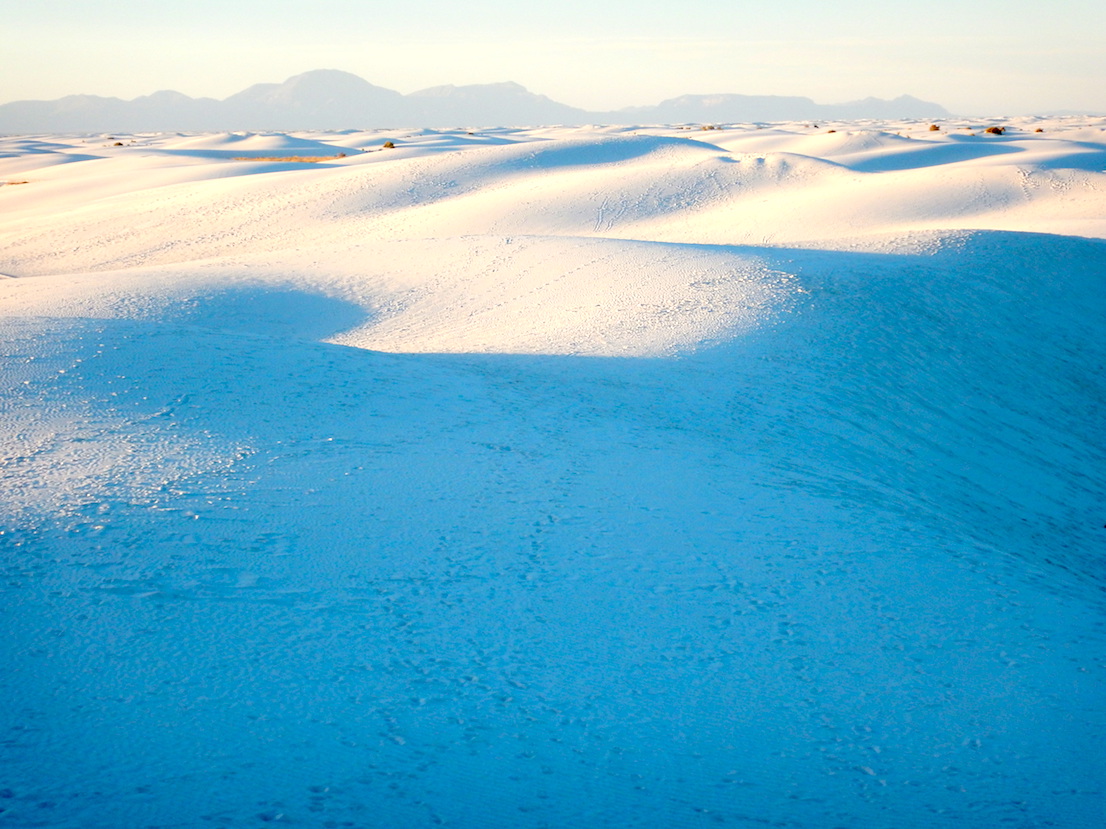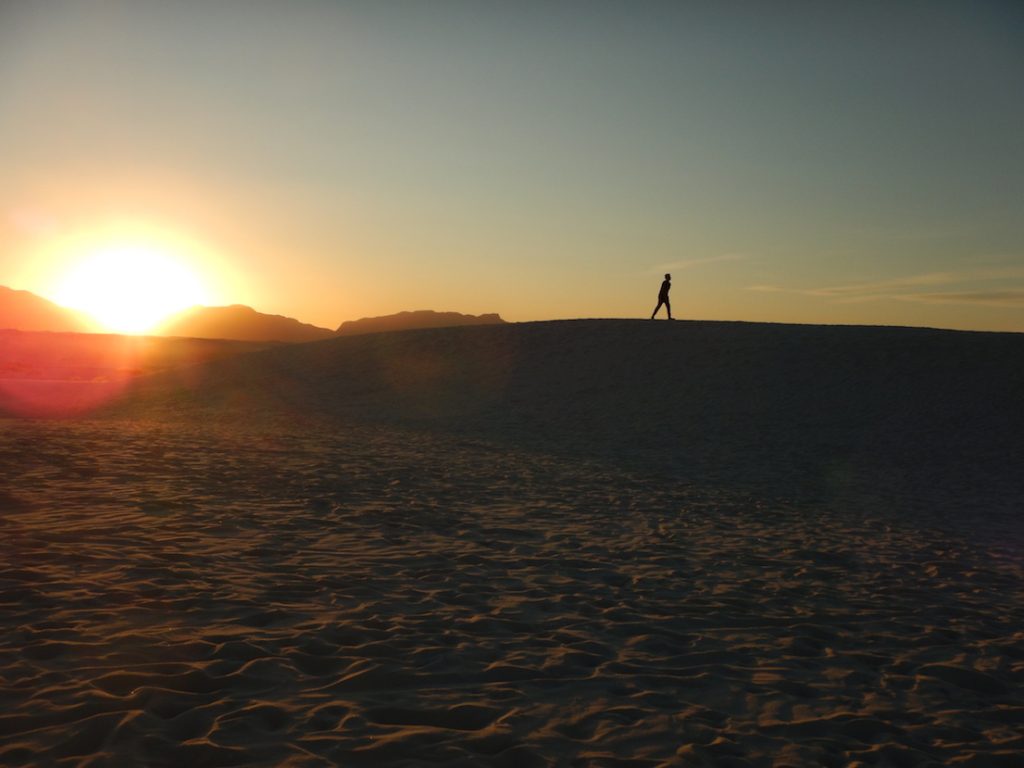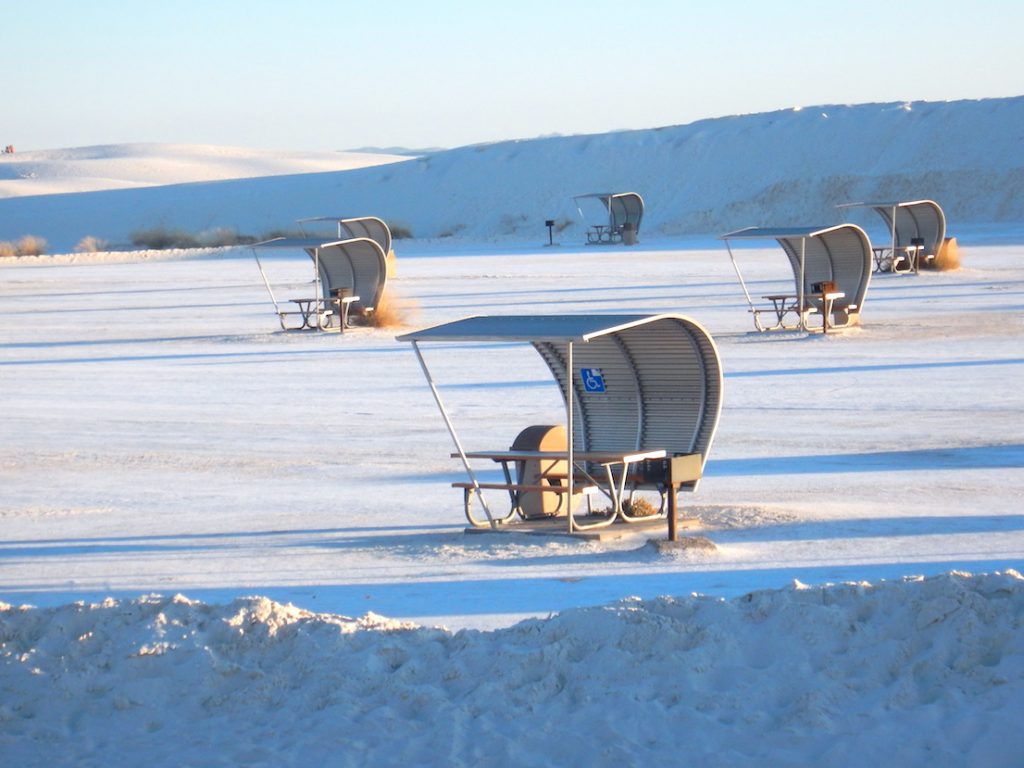White Sands Bumped to National Park Status

ALAMOGORDO, New Mexico – America got a very big present in the final days of 2019 — its 62nd national park. It is White Sands National Park between Alamogordo and Las Cruces, New Mexico, upgraded from national monument status.
You may have thought White Sands already was a national park, but it wasn’t. It was a national monument, another category of protected public land, but distinct from national parks, although both parks and monuments are overseen by the National Park Service. It became a national monument in 1933, when developers were eyeing the strange terrain for gypsum mining.

White Sands now shares national park status with 61 other American treasures under National Park Service stewardship, places such as Yellowstone, the Grand Canyon and the Great Smoky Mountains.
Even though White Sands has joined the Big Boys Club so to speak, it is relatively small. The park protects the vast majority of a 275-square-mile dune-covered landscape that delivers a beautiful white reflection of the desert sun, while Yellowstone covers 3,468 square miles, and Great Smoky Mountains National Park covers more than 780 square miles.
More than 600,000 people find this spot on U.S. 70 every year to learn about the ever-moving dunes, capture extraordinary photos and go sledding. Yes, the sand of White Sands is so fine that it is possible to slide down a steep dune on a plastic disc without bundling up in layers of winter clothing.
This obviously is a geologic oddity. After all, it is the largest gypsum dunefield in the world – one big enough for astronauts on the International Space Station to observe. Gypsum is the key word here. These gentle swaths of gypsum, the same stuff in sheetrock walls, plaster of Paris and even toothpaste, are different from the silica sand found in desert and beach settings.

Creation of this gypsum sand is a tale millions of years in the making. Here are the basics, told at a very elementary level.
Sediments in a prehistoric sea dried out when the sea disappeared, mountains were formed with layers of gypsum, a basin took shape between two mountain ranges and rain began to fall. Rain carrying water-soluble gypsum washed from the mountains into the basin and formed a shallow lake. It was like a bathtub, but with no drain, so when the lake dried up, evaporation created gypsum crystals that were blown by the wind and broken down into today’s sand.
All it takes is time. Lots and lots of time.
A visit today is full of surprises, not the least of which is learning that the massive dunes move. Steady southwest winds can push them up to 38 feet a year. You won’t see any movement as you stand there, but you certainly can see evidence of movement, such as pillars of vegetation that once were surrounded by sand.

This otherworldly scene has attracted humans for at least 10,000 years. Commercial development (remember gypsum has value) was short-circuited in 1933 when the national monument was created, and in recent decades, movie producers have found this scenery ideal for westerns, science fiction and apocalyptic films. Examples include “Hang ‘Em High,” “The Man Who Fell to Earth,” “My Name is Nobody” and “The Book of Eli.”
Everyday visitors come to take sunset or full-moon walks with park rangers, enjoy picnics in wind-protected shelters, hike almost nine miles of trails or just drive the park’s eight-mile loop. Plenty of them, of course, buy or rent plastic discs at the visitor center’s store and get the unusual treat of sledding in the desert.
Trip-planning resources: NPS.gov/whsa, NewMexico.org, Alamogordo.com and LasCrucesCVB.org

Leave a Reply